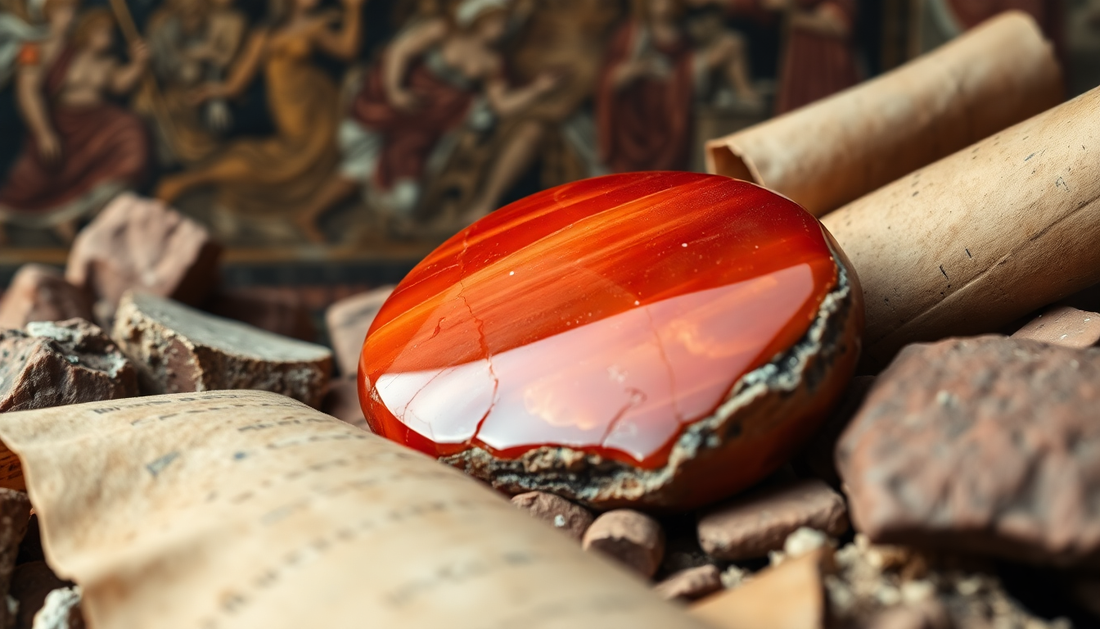
The Captivating Carnelian: Uncovering the Lore of Ancient Greece
Share
Carnelian, a mesmerizing gemstone with a rich history, has long been revered for its captivating beauty and intriguing symbolism. In the ancient world, this vibrant orange-red stone was highly prized, particularly in the realm of ancient Greece, where it held a special place in the hearts and minds of the people.
Carnelian's association with ancient Greece can be traced back to the Minoan civilization, where it was used in the creation of intricate seals and jewelry. The stone's warm hues were believed to represent the sun, and it was often used in rituals and ceremonies to invoke the blessings of the gods.
One of the most fascinating aspects of carnelian's history in ancient Greece is its connection to the legendary hero, Hercules. According to myth, Hercules was said to have worn a carnelian amulet that granted him immense strength and courage. This belief was so widespread that carnelian became known as the "Hercules Stone," and was often worn by warriors and athletes as a talisman of protection and victory.
Beyond its mythological significance, carnelian also played a role in the daily lives of ancient Greeks. The stone was believed to have the power to promote clear thinking, enhance creativity, and even protect against the evil eye. Artisans and craftspeople often incorporated carnelian into their work, creating stunning pieces of jewelry, seals, and decorative objects that were highly prized by the elite.
One of the most intriguing aspects of carnelian's history in ancient Greece is its association with the goddess Aphrodite. The stone was believed to be a symbol of love, beauty, and fertility, and was often used in rituals and offerings to the goddess. Interestingly, the ancient Greeks also believed that carnelian could enhance sexual desire and promote marital harmony, making it a highly sought-after gemstone for those seeking to strengthen their romantic relationships.
Today, the captivating lore of carnelian in ancient Greece continues to fascinate and inspire. Whether you're a collector of gemstones, a lover of history, or simply someone who appreciates the beauty and symbolism of this remarkable stone, exploring the rich tapestry of carnelian's past is a journey well worth taking.
The Symbolism of Carnelian in Ancient Greece
In the ancient world, carnelian was believed to possess a wide range of symbolic meanings and powers. From its association with the sun and the gods to its role in promoting love, creativity, and protection, this gemstone was deeply woven into the fabric of Greek culture and mythology.
One of the most significant symbolic associations of carnelian in ancient Greece was its connection to the sun. The stone's warm, fiery hues were believed to represent the power and energy of the sun, making it a popular choice for use in rituals and ceremonies honoring the sun gods, such as Apollo and Helios.
Carnelian was also closely linked to the goddess Aphrodite, the embodiment of love, beauty, and fertility. The stone was believed to possess the power to enhance romantic relationships, promote sexual desire, and even aid in conception. As a result, carnelian was often used in love potions, amulets, and other talismans associated with the goddess.
Beyond its mythological significance, carnelian was also believed to possess practical and protective powers. The stone was thought to enhance creativity, promote clear thinking, and even ward off the evil eye. As a result, it was commonly used by artisans, scholars, and those seeking to protect themselves from harm.
The Enduring Legacy of Carnelian in Ancient Greece
The rich history and symbolism of carnelian in ancient Greece have left an indelible mark on the world, and the stone continues to captivate and inspire people to this day. From the stunning jewelry and seals of the Minoan civilization to the mythological tales of Hercules and Aphrodite, carnelian has woven itself into the very fabric of Greek culture and history.
Today, the legacy of carnelian in ancient Greece lives on, with the stone continuing to be prized for its beauty, symbolism, and healing properties. Whether you're a collector, a history buff, or simply someone who appreciates the timeless allure of this remarkable gemstone, exploring the captivating lore of carnelian in ancient Greece is a journey that is sure to leave a lasting impression.